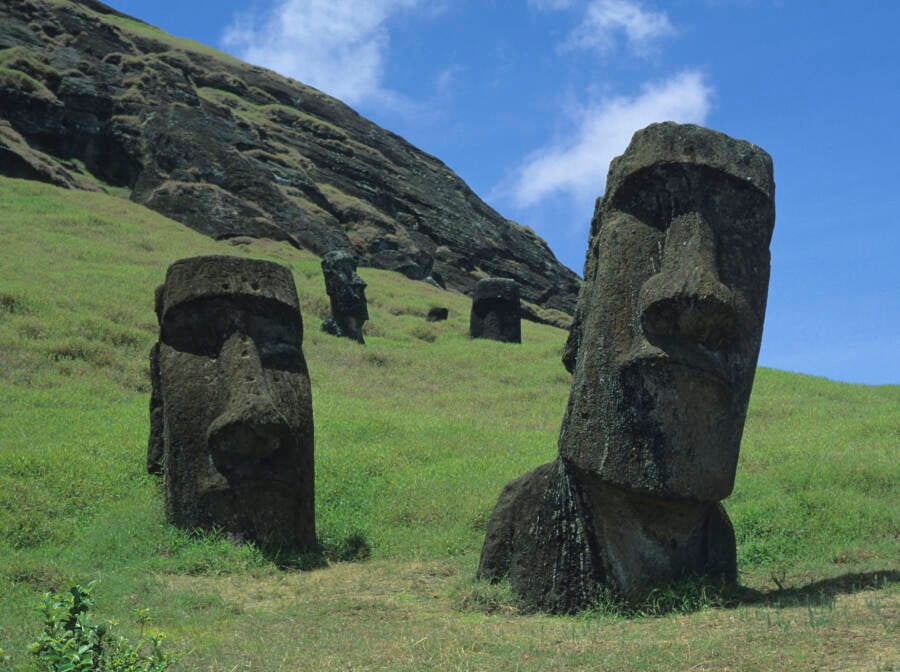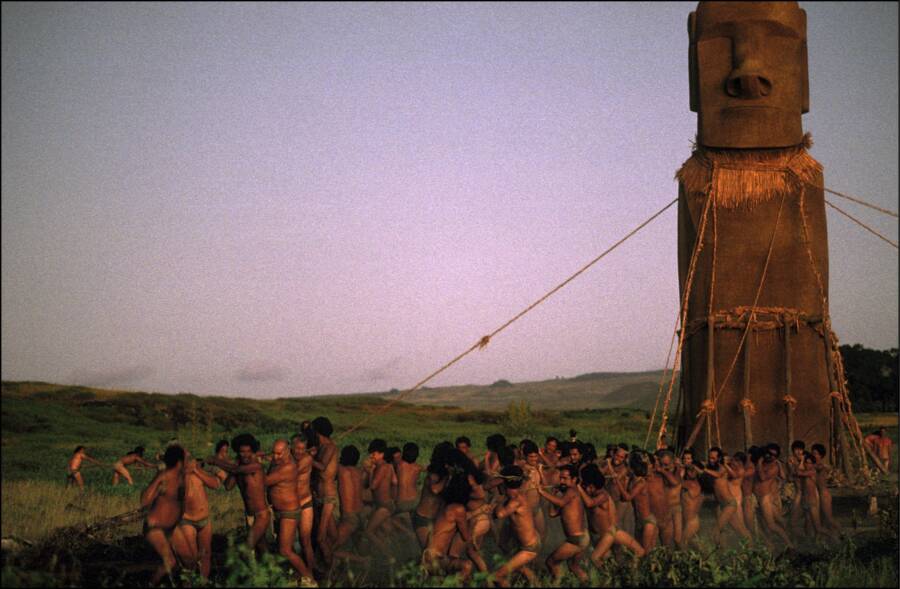Why Were The Easter Island Heads Built?

Wojtek BUSS /Gamma-Rapho via Getty ImagesSome of the 900 moai statues on Easter Island, also called Rapa Nui.
On Easter Day in 1772, Dutch explorer Jacob Roggeveen spotted an island in the South Seas, highly isolated from the rest of the world. It was adorned with nearly 1,000 large statues standing 30 feet tall. Roggeveen called the place Easter Island, and in the 250 years since, the island has continued to mystify people across the world.
Per Smithsonian magazine, Easter Island is just 14 miles long and seven miles wide. It lies over 2,000 miles from the coast of South America and 1,100 miles from the nearest Polynesian island, Pitcairn Island, making it the most remote inhabited location on Earth.
Upon its discovery by the Western world, contemporaries “could hardly conceive how these islanders, wholly unacquainted with any mechanical power, could raise such stupendous figures,” as written by British mariner Captain James Cook in 1774.
Many people have speculated about the origins of Easter Island — known to its inhabitants as Rapa Nui — and the stone heads that dot it, with recent research suggesting that the statues may have been positioned in locations where freshwater was available to the inhabitants.

Yves Gellie/Gamma-Rapho via Getty ImagesA scene from the 1994 film Rapa-Nui illustrated the history of the island using native actors, filming on location and providing a presumed history of the island.
Rapa Nui receives very little rainfall each year, and being in the middle of the sea, it is surrounded by saltwater. The moai, then, may have been indicators for the people of Rapa Nui that potable water could be found nearby.
This is, of course, only one of many potential theories, and it only answers one of the dozens of questions researchers have about the island and its large stone heads.
For example, researchers have largely agreed that the island’s original inhabitants likely came from another Polynesian island, though they haven’t reached a consensus on which island it may have been.
There is also the question as to why the people of Rapa Nui had decided to topple several of the large idols by the time Roggeveen came across it in 1772 — especially if their construction was in part due to water supplies.
Archaeological and anthropological records offer a multitude of often contradictory possibilities regarding Rapa Nui’s origins — and the islanders’ oral histories of the land introduce even more alternatives, adding more mud to the already cloudy water.
In any case, the many ancient mysteries of Easter Island have no definitive answers to this day.





